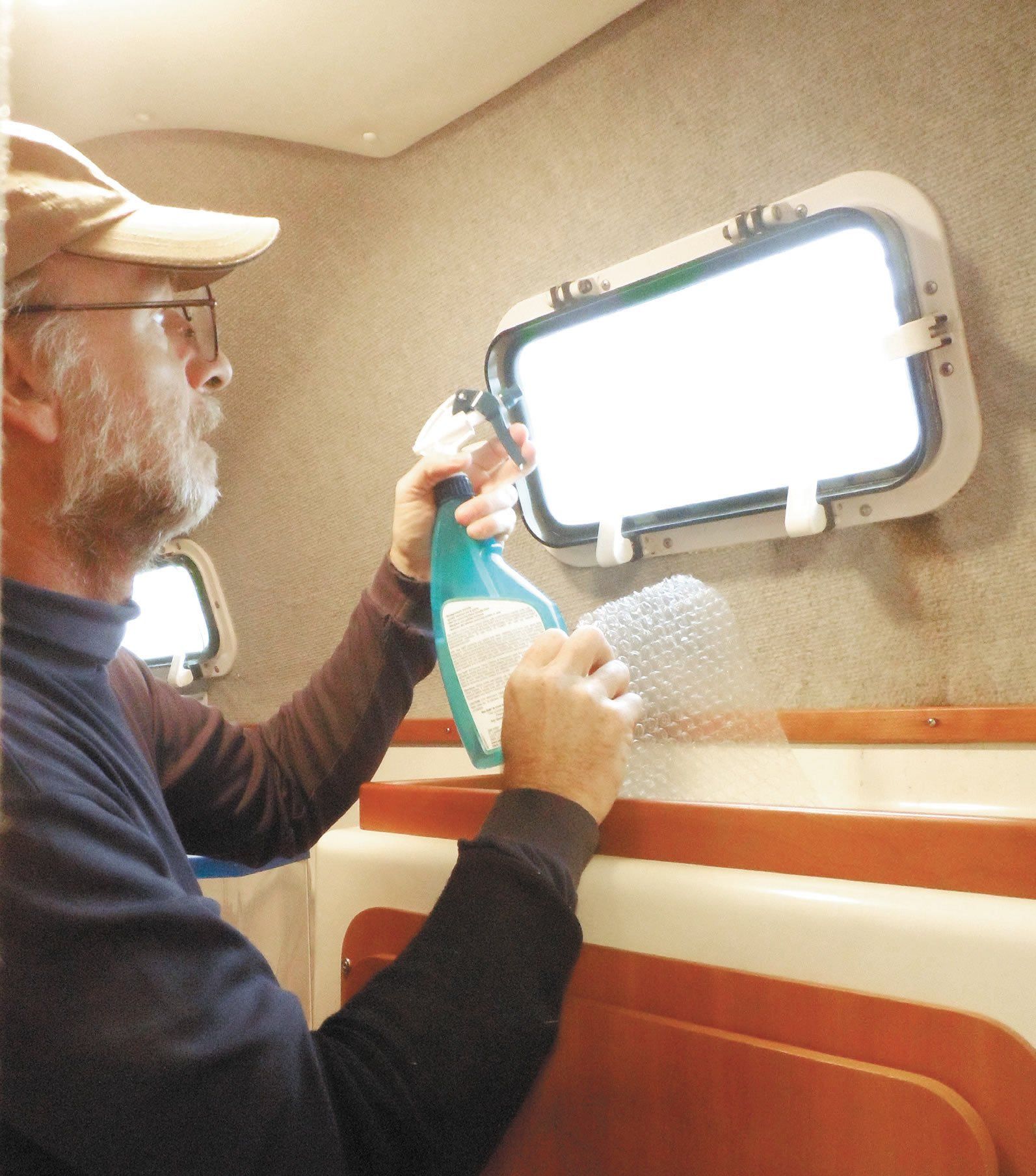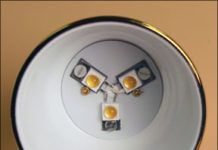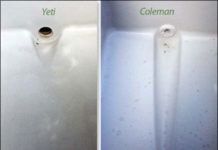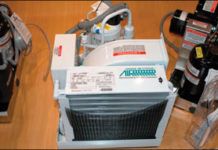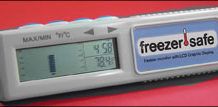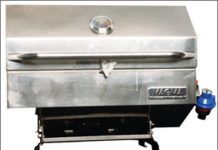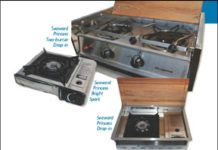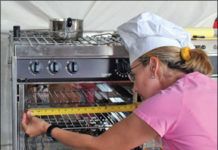Practical Sailor LED Lightbulb Test
In this LED cabin light test, Practical Sailor looks at 17 light bulbs from seven manufacturers. The LEDs were tested to see which was the most worthy replacement for a 20-watt xenon bulb in a bulkhead-mounted reading light. Testers measure LED beam angles and intensity, LED power consumption, LED color temperature, LED radio frequency interference, and LED reading and cabin illumination. The LED lights tested include: Alpenglow TR LED complete brass fixture; three lights from Cruising Solutions; three lights from Doctor LED; four from Imtra; two from Opto Technology, two from Daniel R. Smith & Associates (DRSA) manufactured by Mast Products; two of Scad Technologies (Sailors Solutions) Sensibulbs; and one LED light from West Marine.
Practical Sailor Puts Monster-Sized Coolers Through a Melt Down
Ice chests come in all shapes and sizes. And often times, sailors and fishermen will prefer keeping a large cooler aboard to installing a marine refrigeration system. So for this test, we narrowed the field to portable 65-quart coolers and a 70-quart cooler from Yeti, Engel, and Coleman. The three test products were the Engel ENG65, Yeti Tundra, and the Coleman Ultimate Extreme Marine. Testers compared the effectiveness of each cooler at keeping ice during a meltdown test: A six-pack of soda was covered with 16 pounds of ice and checked at 12-hour intervals. The top performer was the Engel, but testers deemed the Coleman a bargain as it was less than half the cost of the others.
Troubleshooting AC Units
I have an air-conditioning unit with more than 14,000 BTUs. Here in Florida, with a 38-foot boat, that just doesn’t hack it. The unit’s been checked for efficiency by a technician. My prior boat (also 38 feet) had two units totaling over 20,000 BTUs. Those were effective, but that output is enough to cool a small store ashore. How are boat A/C BTUs determined? I suspect the temperature of coolant water is a major factor. Also, what is the effect when coolant water is suppressed by a clogged filter? Are they built to automatically shut down the compressor?
Freezer Safe Tracks Fridge Temps
No bigger than a pack of gum, Freezer Safe is a digital recording thermometer that collects temperature data and displays it graphically. The battery-operated (two AAA cells) unit can optimize boat refrigeration systems by storing high and low temps for 100 minutes, 100 hours, or 100 days (though the batteries might not last that long). The data lets you adjust thermostat settings in order to reduce power use. The thermometer can also track warm and cold spots and help you find the best trade-off between food longevity and temperature. Freezer Safe can warn you if food may have thawed and refrozen, helps reduce the risk of accidentally freezing refrigerated foods. For holding-plate refrigeration systems to operate efficiently, the temperature cutoff on the compressor must be carefully set. Freezer Safe can help identify the ideal eutectic point for this system.
The Bug Battle Begins
With bug season upon us, a new product we unearthed during our medical kit test (see page 32) seemed worthy of a closer look. Natrapel 8 Hour, from Tender Corp. (parent company of Adventure Medical Kits), promises DEET-free protection from mosquitoes, ticks, no-see-ums, biting flies, and other nasties. While DEET, an EPA-registered pesticide, is the most common active ingredient in bug sprays, Natrapel uses Picaridin, a chemical that has been used in Europe for 20 years and made its way into the U.S. this decade. The Centers for Disease Control recommends both DEET and Natrapel as effective insect repellents. Both also are registered with the U.S. Environmental Protection Agency, which includes oil of lemon eucalyptus and oil of citronella on its list of active ingredients for repelling insects.
Aussie Grills Like It Hot
In June of 2006 Practical Sailor looked at six propane marine barbecue grills from four manufacturers. Two high-end Australian barbecue grills have come to our attention since that test: The Sovereign Bravo BBQ and the Galleymate 1100. We took a close look at these grills and then pitted them in a cook-off against the winner of the June 2006, the Magma Catalina. Both Aussie grills have an optional grill face that is part grill and part flat plate, or griddle. The grill plates are machined from large sheets of corrosion-resistant steel. Both Aussie grills offer excellent wind protection and both come with an impressively large range of both rail and deck mountings. Both grills are made from 316 stainless steel, nearly twice as thick as the Catalinas 304 grade stainless steel.
Small Stove Update: Seaward Stoves Unseat Top Picks
Following our reviews last year of single-burner stoves (July 2006) and two-burner stoves (September 2006), Seaward Products sent us three products for a small stoves update. The late comers were a propane-fired, two-burner drop-in and two single-burner, butane cookers (one portable and the other a drop-in). Testers compared their performances to the top picks of our 2006 tests.
Galley Ranges and Small Stoves Update
We received four galley ranges for our test-three propane stoves and one alcohol stove. The propane models were: Force 10 Gourmet Galley (Model 63351), Seaward Princess Model 3175, and Tasco Model 755LP. The alcohol-fueled Origo 6000 by Dometic was the only non-propane stove we tested. Our hunt for the best marine stove looked at the stoves construction, durability, performance, safety, size, and price.
Portable Marine Refrigeration Test
One of the advantages of a compressor-driven portable refrigerator is that it can also serve as a freezer. And compared to thermo-electric coolers, they require fewer amps to do the job. Cruising boats need to be energy efficient, so amp consumption with a 12-volt power supply was one of the key factors Practical Sailor looked at in this test. As in any marine refrigeration test, insulation is a key factor in efficiency, so our comparison also tried to single out the best insulated units. Ultimately, the linear compressor system used in the Engel and Norcold refrigerator/freezers proved to be more efficient.
Marine refrigeration: Thermoelectric Cooler Test
The main drawback of thermoelectric coolers is power usage. This will likely be an issue during extended use or for boats with small battery banks and anemic charging systems. The 106-130 amp load, over a 24-hour period, is about twice as much demand as a built-in evaporative sytem and about three times the demand of the most efficient-and most expensive-installed systems. Also, thermoelectric units are limited in their ability to cool internal temperatures, usually to a maximum of about 40 degrees below the ambient temperature.

































